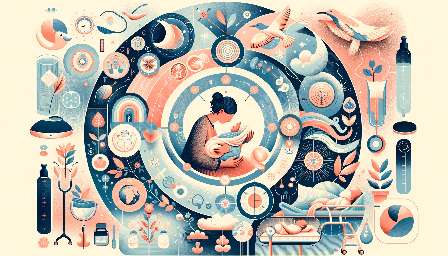Childbirth is a remarkable and life-altering experience for women. It is essential to understand the different stages of labor and how pain management can play a crucial role in ensuring a positive birthing experience.
The First Stage of Labor
The first stage of labor is characterized by regular contractions that cause the cervix to dilate and efface. This stage is further divided into early labor, active labor, and transition.
Early Labor
During early labor, contractions may start off irregular and mild, becoming more regular and intense over time. It is typically the longest phase of labor and can last for several hours.
Active Labor
Active labor begins when the cervix is around 6 centimeters dilated. Contractions become stronger, longer, and more frequent. This stage marks significant progress towards childbirth and requires focused breathing and coping techniques.
Transition
The transition phase is characterized by the cervix dilating from 8 to 10 centimeters. Contractions are intense and frequent, and women may experience the urge to push. This phase can be overwhelming, and pain management becomes crucial for comfort and support.
The Second Stage of Labor
The second stage of labor begins when the cervix is fully dilated, and it ends with the birth of the baby. During this stage, women experience the strong urge to push and work with their healthcare provider to bring their baby into the world.
The Third Stage of Labor
The third stage of labor involves the delivery of the placenta. After the baby is born, contractions continue, and the placenta detaches from the uterine wall. This stage marks the completion of the birthing process.
Pain Management during Childbirth
Pain management during childbirth is a critical aspect of ensuring a positive and empowering birthing experience. There are various options available to help women manage labor pain and find comfort during the process:
- Non-Pharmacological Techniques: These include breathing exercises, relaxation techniques, massage, and hydrotherapy, providing natural pain relief and promoting relaxation.
- Pharmacological Pain Relief: Medications such as epidurals, narcotics, and analgesics can be administered to manage labor pain. These options provide effective temporary relief while allowing women to remain alert and active during labor.
- Support from a Birth Partner: Emotional support and physical comfort from a birth partner can greatly alleviate pain and anxiety during childbirth. Continuous support has been shown to reduce the need for pharmacological pain relief.
- Complementary Therapies: Techniques such as acupuncture, acupressure, and aromatherapy can complement traditional pain management methods and provide additional relief during labor.
Childbirth and the Empowerment of Women
Childbirth represents a profound journey of empowerment for women, and understanding the stages of labor and pain management options allows for informed decision-making and a sense of control during the birthing process. By being aware of the different stages of labor and the array of pain management techniques available, women can approach childbirth with confidence, knowing that they have the knowledge and resources to experience this transformative event in a positive and fulfilling way.


